
At not quite 50,000 miles and 13 years of operation, the muffler on our ‘06 Navion J (built on a 2005 Chrysler-Daimler Sprinter 3500 chassis with the OM647LA inline-5 CDI Engine) developed a loud rattle at idle - I assumed that an internal baffle element was somehow adrift. We use the Navion somewhat intermittently, so I left this low on the repair priority list for about a year.
Initial research on the View-Navion Tech Yahoo! Group, the Sprinter Source forum and elsewhere revealed that the Mercedes factory exhaust system for the 2005 Sprinter 3500 (which I think is a MOPAR 5119762AA or similar) - which comprises a couple of catalytic converters and a large muffler - is available only as the entire one-piece assembly between the down pipe and the tailpipe. Prices for the assembly range from $1,300 to over $3,000. That’s expensive, but in our case, it was an annoyingly pricey solution for a problem that wasn’t mission-critical. I don’t think anything would be harmed by ignoring the problem, except the goodwill of neighbors in campgrounds.
The original muffler and catalytic converters (the dented bottom of the muffler was from my exploratory taps and later experimental hits with a rubber mallet)
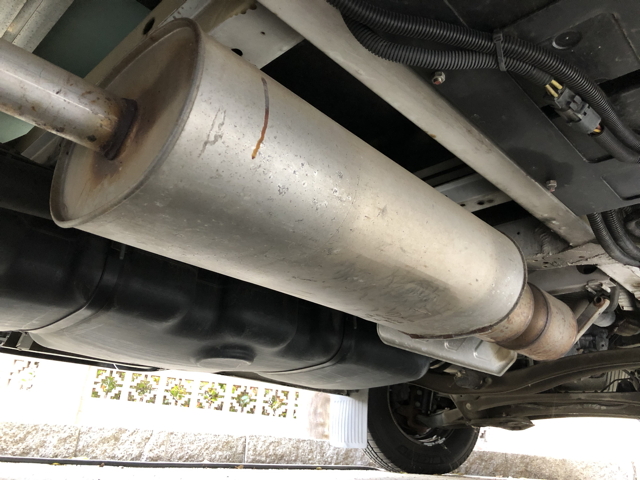
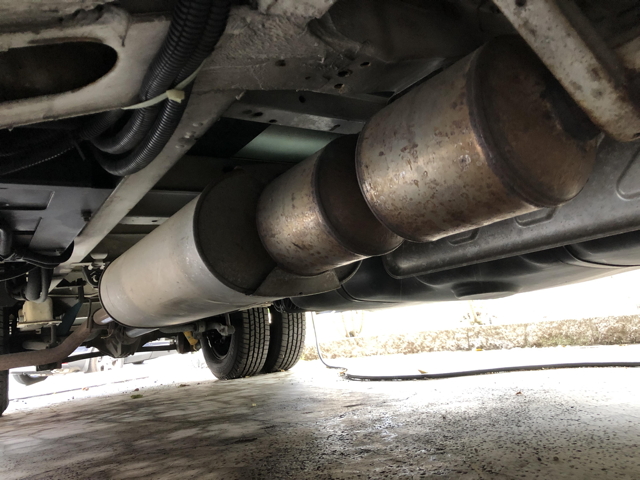
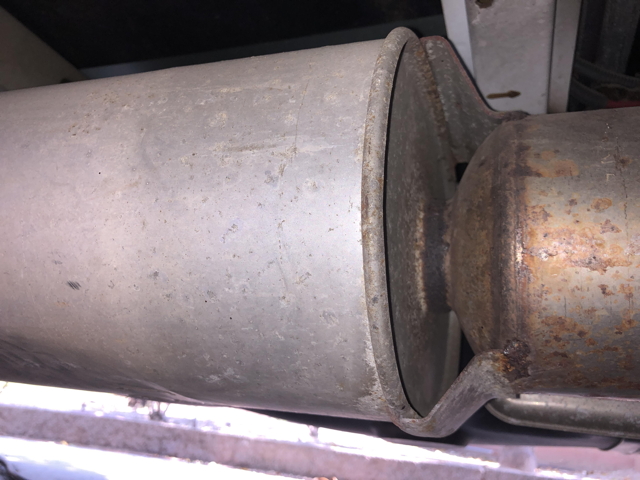
After I hit the wall of what I could research online, I sought a local exhaust shop for expertise. I was fortunate to find a terrific resource with my first choice, Morse Muffler in Burbank, California.
I dropped by the shop and spoke to owner Tim Morse before I brought the Navion. Tim was amiable and appeared knowledgeable and competent. I described the symptom, and he recognized the Sprinter system. He said said that because the exhaust temperatures of these vehicles could be as high as 500°F in the muffler, that this created huge thermal swings in muffler components, especially climbing and descending grades. Because the Mercedes muffler’s internal baffling was spot-welded, a lifetime of expansion and cooling cycles tended to shear some of the welds, leading to exactly our symptoms. Tim said that if I brought the vehicle in he’d be happy to take a look.
When I brought the vehicle in (and after a wait for a previous customer project to clear their high-capacity lift) they inspected the system, and Tim suggested that he simply replace the muffler section, retaining the catalytic converters. He recommended a Flowmaster 70 Series muffler, which has a continuously MIG-welded structure, rather than the spot-weld construction of the OEM muffler.
It took a few hours for them to locate, pick up and weld in the Flowmaster 53072. While the original Mercedes muffler’s inlet and outlet are coaxially in line, the 53072’s outlet is offset by a few inches - they compensated for this by slightly angling a new piece of pipe bridging the Sprinter’s 2.25” I.D. tailpipe to the Flowmaster’s 3.00” outlet. They welded the new muffler’s 3.00” inlet directly to the original rear catalytic converter (see photos). They also made a nice reinforcing plate to bridge between the aft cat and the new muffler, as was done in the OEM Mercedes exhaust system to take the mechanical loads off the joins between the long muffler and the converter canisters. 
The total for the work was $375: $225 for the muffler plus tax, and $150 labor.
Images of the new muffler work
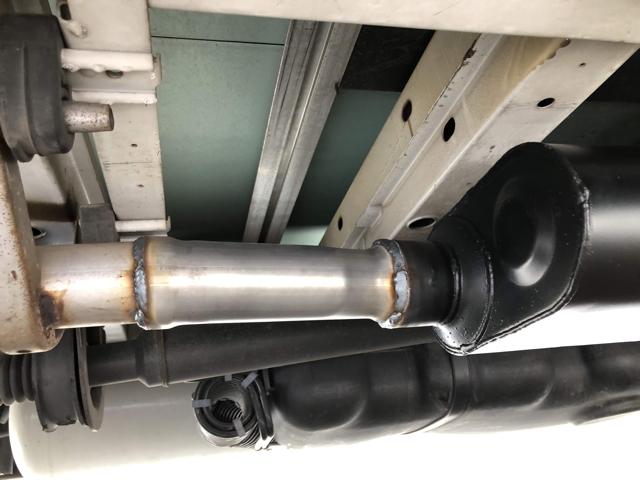
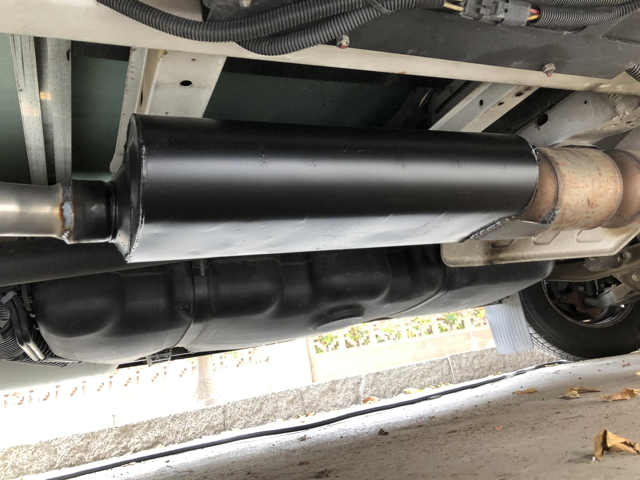
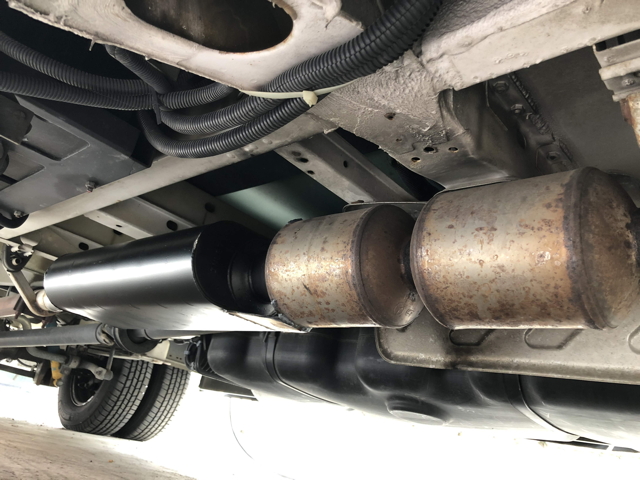
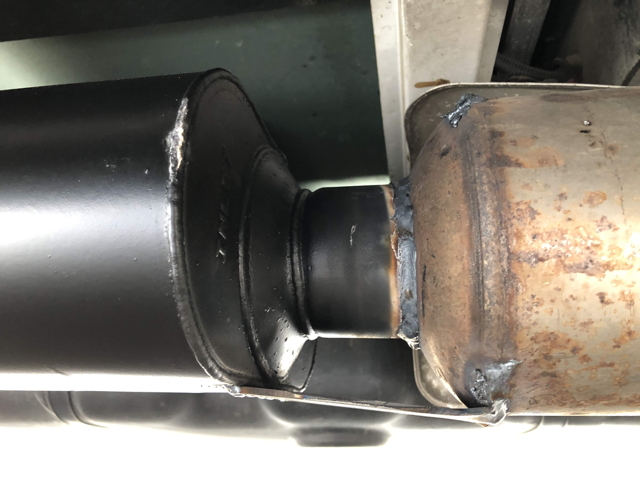
While the Navion still isn't a quiet vehicle on the road - it's especially noisy from the engine compartment and wind noise - exhaust sound is now somewhat reduced compared to the original system. Power appears unaffected, and fuel economy on the one long trip we’ve taken - an annual trip which includes several long grade climbs - was at least as good as in the past. So performance from the new muffler is at least on par, and definitely quieter.
I’m very pleased at the results, the quality of work and the modest price of the repair.
